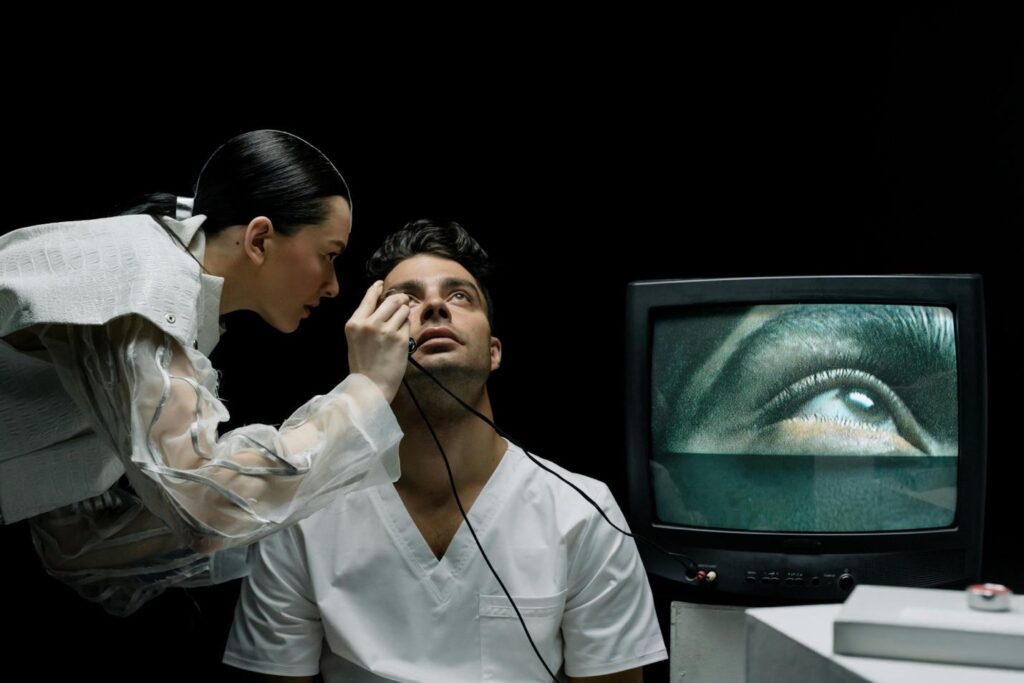The human eye functions much like a camera, capturing images and transmitting them to the brain for processing. At the front of the eye, a lens focuses light onto the retina, enabling clear vision. Over time, this lens naturally changes, often becoming cloudy. This condition is known as a cataract. As cataracts develop, vision becomes progressively more blurred, colors may appear faded, and glare sensitivity increases, particularly in bright lighting or at night. When these symptoms begin affecting daily life, a cataract specialist in Houston can provide expert evaluation and discuss treatment options to restore vision quality.
Causes and Risk Factors
Cataracts form when proteins in the eye’s lens break down and clump together, obstructing clear vision. While aging is the primary cause, several factors can accelerate cataract formation:
- Genetics: A family history of cataracts may increase susceptibility.
- UV Exposure: Prolonged exposure to ultraviolet rays can contribute to lens damage.
- Medical Conditions: Diabetes and hypertension have been linked to an increased risk.
- Medications: Long-term corticosteroid use may lead to earlier cataract development.
- Lifestyle Factors: Smoking, excessive alcohol consumption, and poor nutrition can negatively impact eye health.
Cataracts usually develop gradually, affecting vision over time. In the early stages, individuals may notice increased glare, halos around lights, or difficulty reading small print. As the condition progresses, it can significantly impair daily activities, making tasks such as driving or recognizing faces more challenging.
Diagnosing Cataracts
Ophthalmologists diagnose cataracts through a series of eye exams. These include:
- Visual Acuity Test: Measures the sharpness of vision at various distances.
- Slit-Lamp Examination: Uses a high-intensity light to inspect the eye’s structures.
- Retinal Examination: Conducted after dilating the pupil, allowing a clearer view of the retina and lens.
- Tonometry: Measures intraocular pressure to rule out conditions such as glaucoma.
Once diagnosed, the next step is determining whether cataract surgery is necessary. In some cases, adjusting eyeglass prescriptions or using magnifying lenses may provide temporary relief. However, if vision impairment interferes with daily activities, surgery becomes the most effective treatment.
Cataract Surgery: Procedure and Expectations
Cataract surgery involves removing the clouded lens and replacing it with an artificial intraocular lens (IOL). This outpatient procedure is one of the safest and most frequently performed surgeries worldwide, with a high success rate and minimal complications.
Types of Cataract Surgery
- Phacoemulsification (Phaco):
- The most common technique.
- Uses ultrasonic waves to break the lens into small fragments for removal.
- Requires a small incision, leading to quicker recovery.
- Extracapsular Cataract Extraction (ECCE):
- Used in advanced cataracts where phacoemulsification is not suitable.
- Requires a larger incision to remove the lens in one piece.
- Laser-Assisted Cataract Surgery:
- Uses advanced laser technology to create precise incisions.
- Softens the cataract for easier removal.
- May lead to faster healing and reduced post-operative discomfort.
Each surgical approach has its advantages, and ophthalmologists recommend procedures based on individual patient needs and cataract severity.
Before Surgery: Preparation and Precautions
Preparation for cataract surgery involves several key steps:
- Pre-Surgical Eye Examination: Determines eye measurements for selecting the most appropriate IOL.
- Medication Adjustments: Some patients may need to pause specific medications under medical guidance.
- Avoiding Eye Irritants: Patients should refrain from using makeup, lotions, or perfumes near the eyes before surgery.
- Pre-Surgery Eye Drops: Antibiotic and anti-inflammatory drops may be prescribed to prevent infection and reduce inflammation.
On the day of surgery, patients receive local anesthesia to numb the eye. Mild sedation may also be administered to ensure comfort. The procedure typically takes 10 to 30 minutes, and patients can return home the same day.
Recovery and Post-Surgery Care
Following surgery, vision gradually improves as the eye heals. Most patients experience:
- Clearer Vision: Significant improvement within a few days.
- Mild Discomfort: Temporary itching, light sensitivity, or a foreign body sensation.
- Restricted Activity: Avoiding heavy lifting, bending, or strenuous activities for about a week.
Eye drops play a crucial role in the healing process, preventing infection and reducing inflammation. Patients should also wear protective eyewear, such as an eye shield at night, to prevent accidental rubbing.
Potential Complications
While cataract surgery is highly successful, minor risks exist. These may include:
- Infection or Inflammation: Controlled with prescribed eye drops.
- Swelling or Retinal Detachment: Rare but requires immediate medical attention.
- Secondary Cataracts: Some individuals develop posterior capsule opacification (PCO), treatable with a quick laser procedure.
Ophthalmologists monitor recovery through follow-up appointments, adjusting treatment plans if necessary.
Choosing the Right Intraocular Lens
Patients undergoing cataract surgery have multiple IOL options, including:
- Monofocal Lenses: Correct distance vision, requiring reading glasses for close-up tasks.
- Multifocal Lenses: Improve both near and distance vision, reducing reliance on glasses.
- Toric Lenses: Designed for patients with astigmatism, providing clearer vision.
Selecting the right IOL depends on lifestyle needs and personal preferences, and ophthalmologists guide patients through the decision-making process.
Lifestyle Adjustments to Delay Cataracts
While cataracts are a natural part of aging, certain lifestyle choices can support long-term eye health:
- Wearing Sunglasses: Protects against harmful UV rays.
- Eating a Nutrient-Rich Diet: Foods high in antioxidants, such as leafy greens and fish, benefit eye health.
- Managing Chronic Conditions: Controlling diabetes and blood pressure reduces cataract risk.
- Avoiding Smoking and Excessive Alcohol Consumption: Reduces oxidative stress on the eyes.
Regular eye exams remain essential for early detection and effective management.
Looking Ahead: Advancements in Cataract Treatment
Ongoing research in ophthalmology continues to refine cataract treatments. Innovations such as accommodating IOLs, which mimic the eye’s natural focusing ability, may offer even greater visual clarity. Additionally, developments in gene therapy and pharmacological treatments aim to slow cataract progression without surgery.
For now, cataract surgery remains the gold standard for restoring clear vision. With proper care, patients regain their ability to see the world with clarity, improving their quality of life well into the future.
By understanding cataracts, recognizing symptoms early, and exploring treatment options, individuals can make informed decisions about their eye health.






